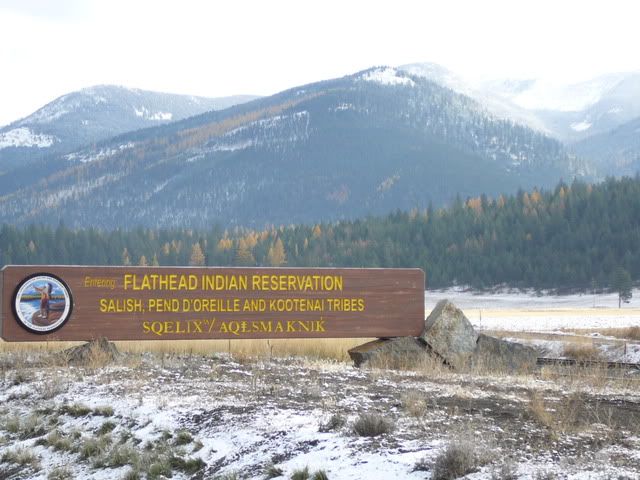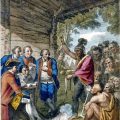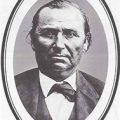
It is not possible to talk about Indians in the United States today without reference to reservations. Most Americans are aware that as the European population expanded across the continent Indians were confined to “reserved” areas which were set aside for exclusive Indian use for “as long as the grasses grow and the rivers flow” or until Congress changes its mind. While there are about 324 federal Indian reservations in the United States, these reservations are not all the same: each reservation is unique with regard to its tribal heritage, its relationship to the land, and its legal relationships with the United States.
Before talking about the different kinds of Indian reservations, it is important to point out that not all Indians live on reservations: less than half of the Indians who are enrolled members of federally recognized Indian tribes live on their reservations.
It is also important to point out that not all Indian tribes have reservations. The federal government has officially recognized only 566 Indian tribes and there are several hundred tribes which do not have an official relationship with the federal government. These unrecognized tribes do not have reservations.
One of the stories which is often told by history books and the popular media is the removal of Indian tribes from east of the Mississippi River and their resettlement in what is now Oklahoma. While the stories of removal need to be told, and retold, they lead to the stereotype of Indian reservations as places far from the indigenous homelands. While many tribes were removed from their homelands, many tribes have reservations which include their traditional homes.
Following the Constitution of the United States, the federal government negotiated treaties (international agreements) with Indian nations. These treaties often established Indian reservations which were territories which the Indian nations reserved for themselves. The treaties indicated these reservations were to be for the exclusive use of the Indians.
Originally, reservations were often areas in which non-Indians were to have only limited access. In the 1868 Treaty of Fort Laramie which established the Great Sioux Reservation, for example, article 2 states that the reservation:
“set apart for the absolute and undisturbed use and occupation of the Indians.”
As with all treaties, the United States refused to enforce treaty obligations against non-Indians. Reservations were often invaded illegally by non-Indian miners, ranchers, and farmers who demanded that the United States government remove the Indians and give them title to the land.
By the 1880s, the federal government was offended by the communal ownership of reservation land and began a policy of dividing up the reservations into small, individually owned plots of land. It was felt that individual land ownership would help Indians to assimilate into American society by helping them value the accumulation of wealth. In addition, surplus land could be transferred to non-Indians. As a result, on many reservations today the Indians are a minority on their own land. While the reservation boundaries were unchanged by the infamous Dawes Act, the land within the reservation boundaries could now be privately owned by non-Indians.
The United States government also declared that it could unilaterally change reservation boundaries. Thus many large reservations, such as that reserved by the Sioux, were broken up into smaller reservations and large areas opened up for non-Indian settlement.
Like many people today, the nineteenth-century government treaty negotiators viewed Indians through a racial lens which simply saw Indian/White. They failed to understand that Indian as a racial construct fails to recognize that there are many very different tribal cultures. While the Anishinaabe, Lakota, Kootenai, and Tohono O’odham are all Indians, they are not the same. In establishing reservations through the treaty process, the federal government often assigned Indians from very different cultural traditions to the same reservations, assuming that all Indians were the same. As a result many shared reservations today are homes to tribes which have very different cultural traditions.
In 1934, Congress passed the Indian Reorganization Act which allowed tribes to reorganize their tribal governments. However, the federal government took the view that reservation and tribe were the same, ignoring the fact that many reservations contained dissimilar tribes. As a result, those reservations wishing to reorganize their tribal governments had to create confederated governments. As a result of this, some smaller tribes have lost their individual identity and have become a part of a new “confederated” tribe.
Since the United States stopped making treaties with Indian nations in 1871, reservations have been created by Presidential Executive Order, by Congressional Action, and by court actions.
Most reservations today are no longer areas reserved for the exclusive use of the Indians. Unfortunately, many of the non-Indians living on the reservations, or close to the reservations, have little understanding of the history of these areas, the cultures of the tribes, and the special body of law which governs them.




Leave a Reply